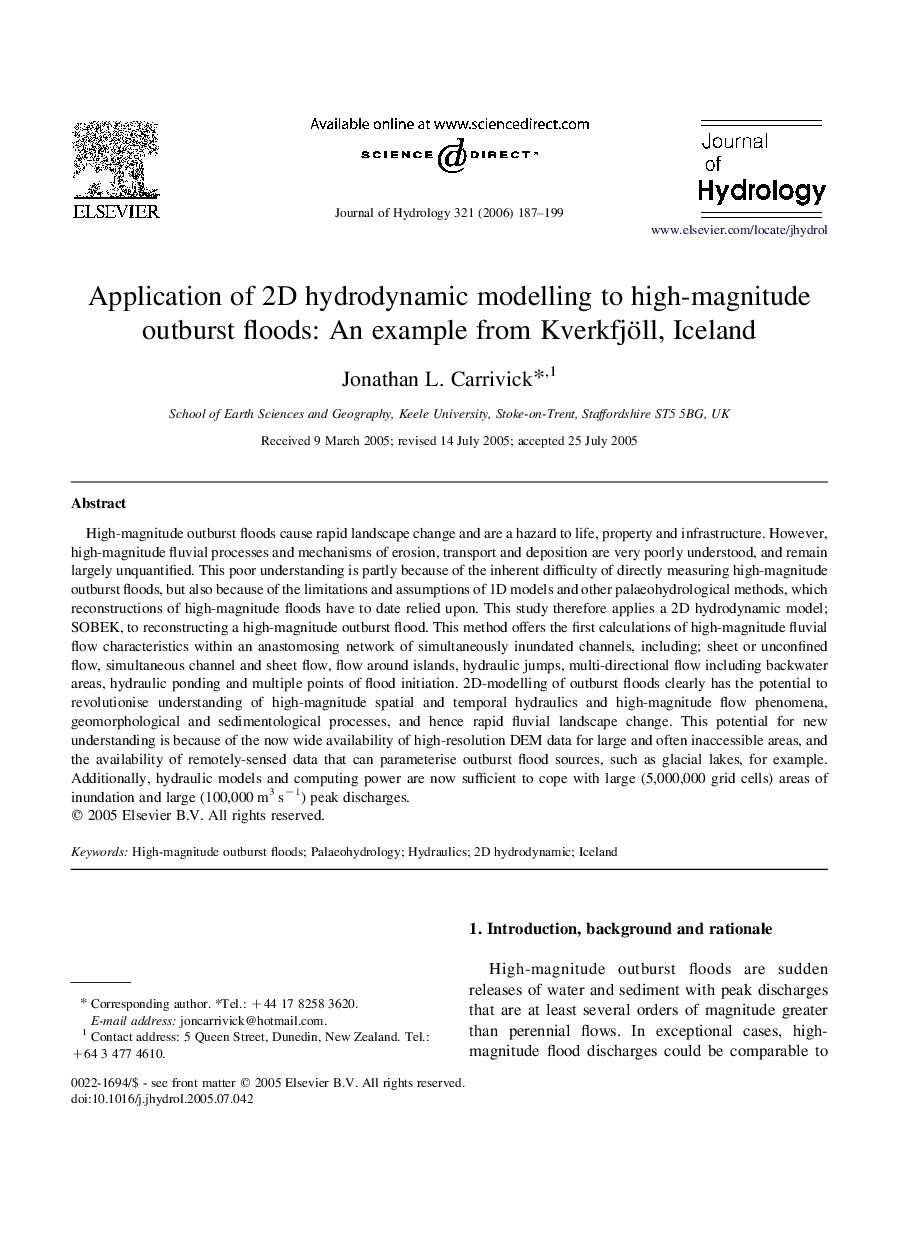| کد مقاله | کد نشریه | سال انتشار | مقاله انگلیسی | نسخه تمام متن |
|---|---|---|---|---|
| 4580656 | 1630167 | 2006 | 13 صفحه PDF | دانلود رایگان |

High-magnitude outburst floods cause rapid landscape change and are a hazard to life, property and infrastructure. However, high-magnitude fluvial processes and mechanisms of erosion, transport and deposition are very poorly understood, and remain largely unquantified. This poor understanding is partly because of the inherent difficulty of directly measuring high-magnitude outburst floods, but also because of the limitations and assumptions of 1D models and other palaeohydrological methods, which reconstructions of high-magnitude floods have to date relied upon. This study therefore applies a 2D hydrodynamic model; SOBEK, to reconstructing a high-magnitude outburst flood. This method offers the first calculations of high-magnitude fluvial flow characteristics within an anastomosing network of simultaneously inundated channels, including; sheet or unconfined flow, simultaneous channel and sheet flow, flow around islands, hydraulic jumps, multi-directional flow including backwater areas, hydraulic ponding and multiple points of flood initiation. 2D-modelling of outburst floods clearly has the potential to revolutionise understanding of high-magnitude spatial and temporal hydraulics and high-magnitude flow phenomena, geomorphological and sedimentological processes, and hence rapid fluvial landscape change. This potential for new understanding is because of the now wide availability of high-resolution DEM data for large and often inaccessible areas, and the availability of remotely-sensed data that can parameterise outburst flood sources, such as glacial lakes, for example. Additionally, hydraulic models and computing power are now sufficient to cope with large (5,000,000 grid cells) areas of inundation and large (100,000 m3 s−1) peak discharges.
Journal: Journal of Hydrology - Volume 321, Issues 1–4, 30 April 2006, Pages 187–199